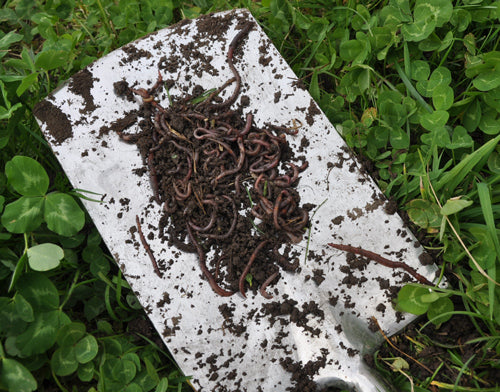North Carolina Worms for Dummies
Table of ContentsGetting My North Carolina Worms To WorkSee This Report on North Carolina WormsNot known Facts About North Carolina WormsNot known Facts About North Carolina Worms
Instance: 1-gallon of worm castings to 4 gallons of potting mix. 1/2 cup in the base of the growing opening for smaller plants. 1 cup for larger plants.
The addition of tea can additionally include enhanced microbial biomass to your soil. You can constantly side-dress your plants with worm castings at any moment. Just keep in mind, the microorganisms will certainly pass away if exposed to UV rays (Sunlight), so make sure to cover the castings with an inch or two of soil.
This frustrated them for many years until the testing approaches ended up being much better. They found that plant development and health displayed a Normal curve. It would improve(with more spreadings), degree off, and then decrease. They were dumbfounded. They finally found that excess plant-growth hormonal agents were the culprit. Way too many worm castings would certainly increase the growth to a speed that the plant could not recoup from.
Get This Report about North Carolina Worms
I have clarified the merits of worm castings for about 2000 words. Worm spreadings are no various. It takes time to create quality worm spreadings.
Worm castings definitely cost even more than chemical fertilizers. Worm castings are on the cheaper end of natural fertilizers. (50 gallons per year) It is a much tougher and very pricey investment to create large amounts of worm spreadings.

Creating a healthy and balanced dirt may be the best benefit of worm castings. We reviewed worm castings NPK and likewise the correct nutrient analysis that must use to worm castings.
Indicators on North Carolina Worms You Should Know
We spoke regarding some of the negative aspects connected with worm spreadings. I covered a great deal of product in this article. There are a lot of links (internal and external). If you would like more information on a particular topic, please click through the links to get more information. As constantly, really feel cost-free to comment or ask questions.
The vertical burrows are usually open, although the worms top the top with deposit and waste matter. Roots need oxygen for their growth, whereas they generate carbon dioxide that requires to leave the soil.
Earthworms increase porosity by 2 devices: (1) by developing long-term burrows, and (2) by boosting dirt gathering. Aggregation is enhanced by the mixing of soil and raw material in the earthworms' digestive tracts. North Carolina Worms. These extremely stable accumulations are deposited by some earthworms in their burrows, and by others at the surface area of the dirt


In one more research, earthworms were approximated to eat 4 to 10 percent of the leading 6 inches of the dirt each year. This only goes to reveal the enormous amounts of dirt that can be refined by earthworms. Dirt compaction lowers the porosity of the dirt. Due to the fact that earthworms increase porosity, they reduce the effects of compaction.
More About North Carolina Worms
Normal earthworm populations can easily eat 2 tons of completely dry matter per acre each year, partly digesting and mixing it with soil. The value of earthworms to blend surface residue with soil becomes really clear in soils that do not have any earthworms. A lot of our Pennsylvania dirts contend least some earthworms, and the result of their complete lack, as a result, can not be noted.
(https://www.classifiedads.com/farm_ranch/3523qy5kp3ddx)In these dirts, the development of topsoil with affordable raw material material did not occur, leading to bad crop growth. As soon as the reason was developed, the government of the Netherlands began a campaign to introduce earthworms. After the introduction of the earthworms, a dark topsoil layer was formed, and plant development boosted significantly.
They live mostly from partially broken down raw material that is currently integrated in the soil. They eat their means with the soil, creating straight burrows that they full of their excrement. These species consume big amounts of dirt that they combine with digested plant deposit in their guts. or anecic varieties stay in long-term vertical burrows that can be 5 or 6 feet deep.
These types ingest considerable amounts of soil that they blend with digested deposit in their digestive tracts. Their waste matter is mainly transferred at the surface of the soil.